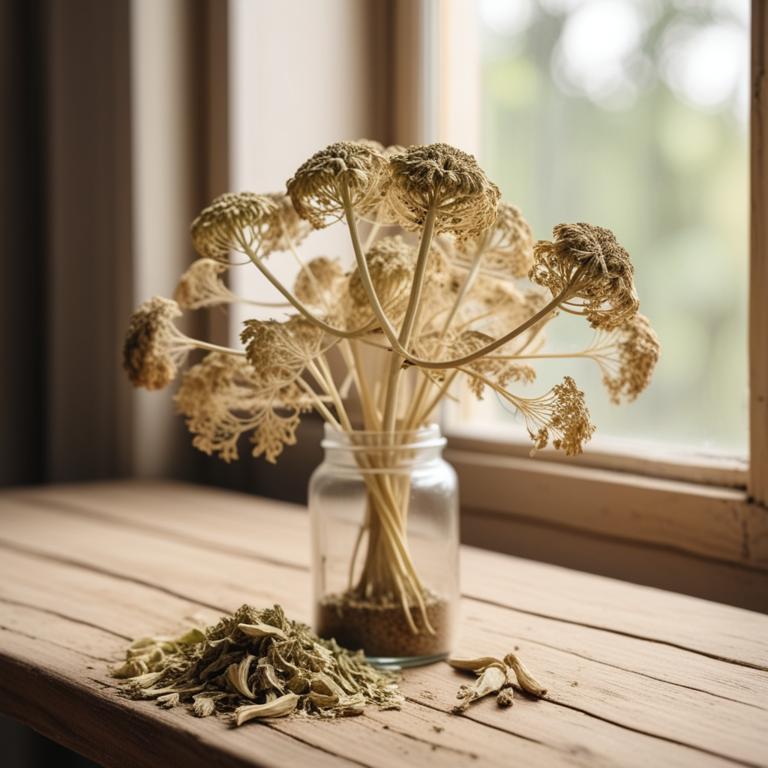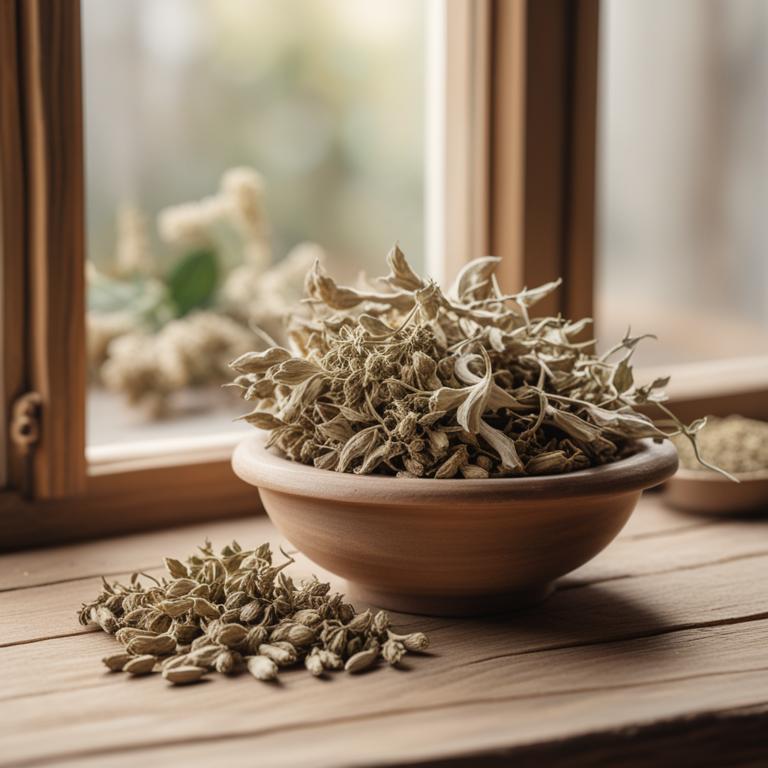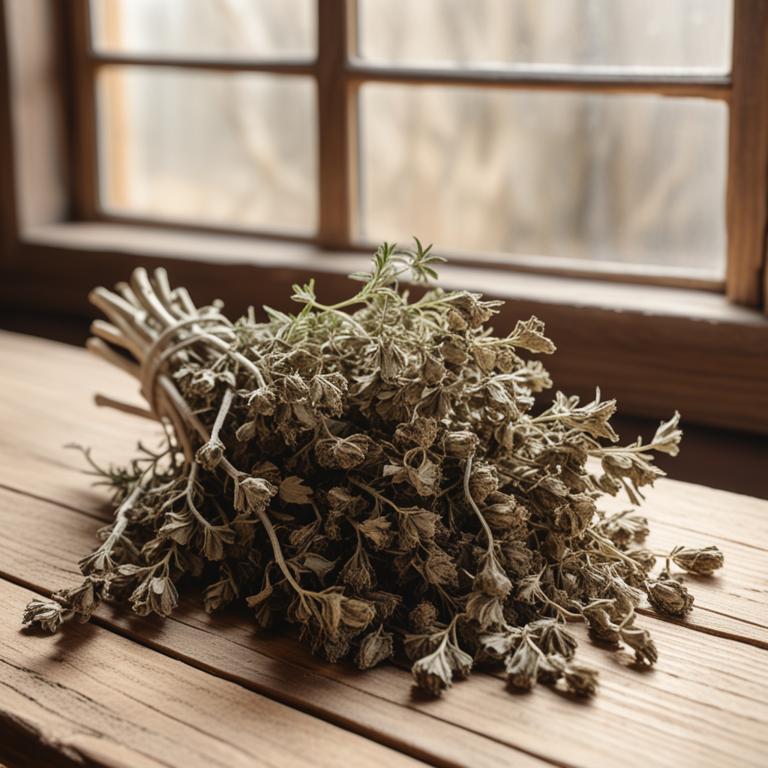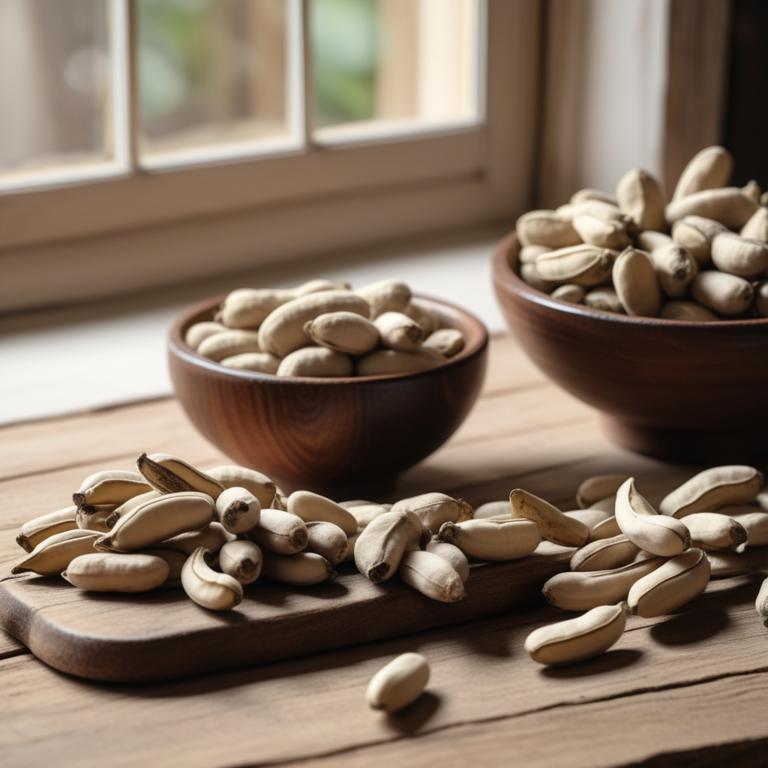Updated: Nov 30, 2024
11 Herbal Tinctures For Period Cramps
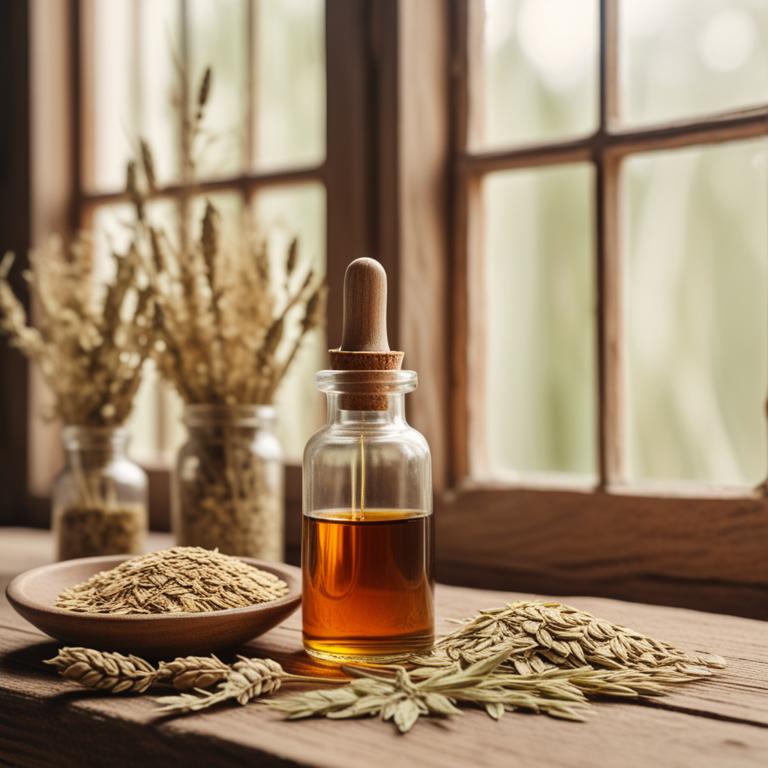
Herbal tinctures can be a great natural way to relieve period cramps.
They work by releasing the active compounds from the herbs into your body, helping to ease pain and discomfort. Herbal teas, in particular, can be really helpful because they allow the herbs to interact with your body in a gentle and soothing way. For example, ginger (Zingiber officinale) is a popular herb for period cramps because it has anti-inflammatory properties that help to reduce pain and swelling. It can also help to calm your stomach and promote digestion, which can be helpful during a period. Another herb that's often used for period cramps is chasteberry (Vitex agnus-castus), which may help to regulate your hormones and reduce symptoms like cramps and mood swings.
Black cohosh (Cimicifuga racemosa) is also sometimes used to ease period cramps, as it may help to relax your muscles and reduce inflammation. Using herbal teas for period cramps can bring some really beneficial changes to your life. For one, it can help you to feel more in control of your body and your symptoms. It can also be a great way to take care of yourself and prioritize your health, especially if you're looking for a natural alternative to pain relief medication. Plus, many herbal teas can be made at home with simple ingredients, so you can customize them to your needs and preferences.
And, because herbal teas are often gentle and non-habit forming, you can use them regularly without worrying about any negative side effects.
This article explains in detail what are the best herbal teas for period cramps and wh.
Also, you may be interested in...
Today Free Bonus!
The Ultimate Herb Drying Checklist
(For Long-Lasting Powerful Medicinal Effect)
How to easily dry herbs that don't mold and that keep their strong medicinal power for more than 1 year.
Table of Contents
1. Zingiber officinale

Zingiber officinale tinctures contains a compound called gingerol, which has anti-inflammatory properties.
Gingerol helps to reduce prostaglandins, hormone-like substances that cause the uterus to contract and lead to period cramps. Another compound, shogaol, found in Zingiber officinale, has analgesic and anti-inflammatory effects, which can help to ease pain and swelling. The warming properties of ginger, caused by its ability to dilate blood vessels, can also help to relieve cramps by increasing blood flow to the affected area.
By reducing inflammation and easing pain, Zingiber officinale tinctures can provide relief from period cramps.
- Gather 1 cup of fresh or dried Zingiber officinale roots and 2 cups of 80% vodka or high-proof alcohol.
- Chop the Zingiber officinale roots into small pieces and place them in a clean glass jar.
- Add 2 cups of 80% vodka or high-proof alcohol to the jar, making sure the roots are completely covered.
- Seal the jar and store it in a cool, dark place for 2-3 weeks, shaking the jar every day.
- Strain the liquid through a cheesecloth or a coffee filter into another clean glass jar, discarding the solids. Store the tincture in a cool, dark place.
2. Vitex agnus-castus
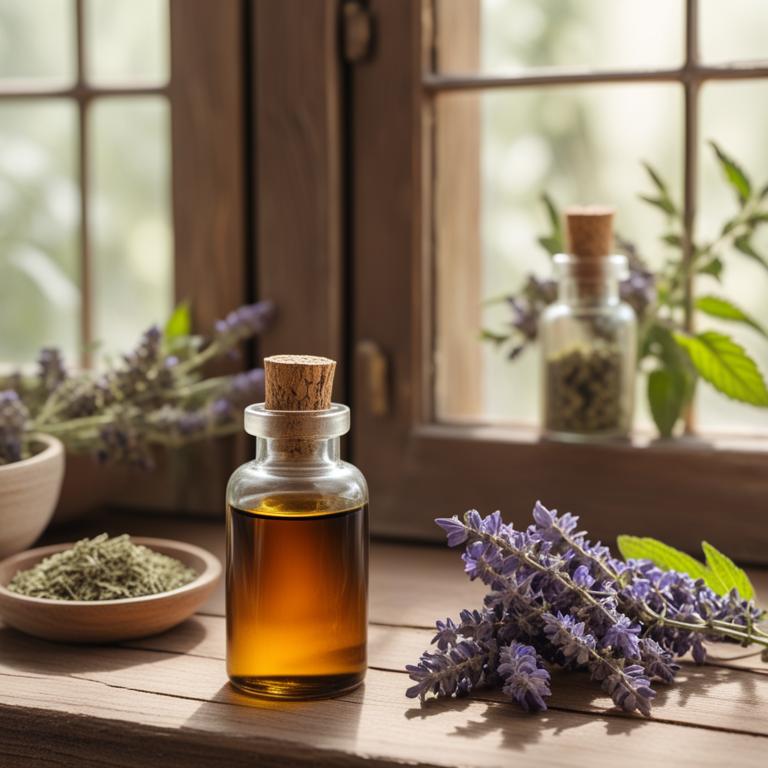
Vitex agnus-castus tinctures contains iridoid glycosides, particularly aucubin and agnuside, which have anti-inflammatory properties that help reduce period cramps.
The tannins present in the tincture have a sedative effect, calming the uterine muscles and relaxing the body. Vitex agnus-castus also contains flavonoids, which have antioxidant properties that help reduce prostaglandins, hormone-like substances that cause cramping and pain. By reducing prostaglandins and calming the uterine muscles, Vitex agnus-castus tinctures can provide relief from period cramps.
This natural remedy has been used for centuries to alleviate menstrual discomfort.
- Gather 1 cup of dried Vitex agnus-castus flowers and 2 cups of 80-100 proof vodka.
- Combine the dried flowers and vodka in a clean glass jar. Stir well to mix.
- Store the jar in a cool, dark place for 2-3 weeks, shaking the jar every day.
- After 2-3 weeks, strain the mixture through a cheesecloth or a coffee filter into another clean glass jar. Discard the solids.
- Transfer the tincture to smaller glass bottles and store them in the fridge. Take 20-30 drops, 2-3 times a day as needed for period cramps.
3. Cimicifuga racemosa
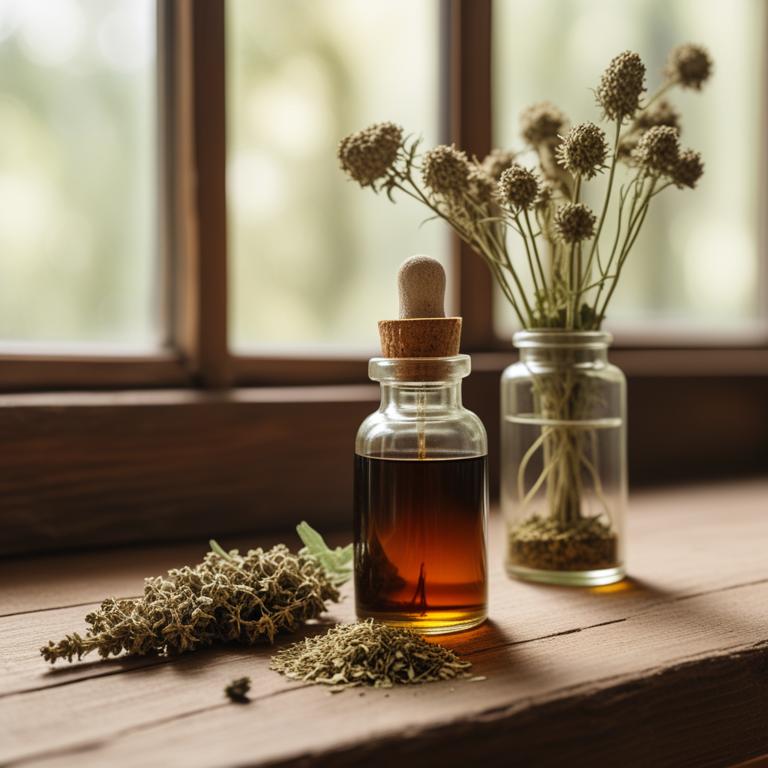
Cimicifuga racemosa tinctures contains a number of bioactive constituents, including ferulic acid, sesquiterpenes, and phenolic acids.
These compounds have anti-inflammatory and antispasmodic properties, which can help to relieve period cramps by reducing inflammation and relaxing the uterine muscles. The sesquiterpenes in Cimicifuga racemosa have a direct effect on the body's hormonal balance, which can help to regulate menstrual cycles and alleviate cramp symptoms. The antispasmodic properties of ferulic acid and phenolic acids can also help to calm the uterine muscles and reduce the severity of cramps.
By combining these properties, Cimicifuga racemosa tinctures can provide effective relief from period cramps.
- Gather 1 cup of dried Cimicifuga racemosa root and 1 cup of 80% vodka in a clean glass jar.
- Add the dried root to the jar and pour vodka over it. Make sure the root is completely covered.
- Close the jar and shake it well. Store it in a cool, dark place for 2-3 weeks. Shake the jar every day.
- After 2-3 weeks, strain the mixture through a cheesecloth or a coffee filter into another clean glass jar. Discard the solids.
- Label the jar with the date, name of the tincture, and dosage instructions (typically 20-30 drops, 2-3 times a day). Store it in a cool, dark place.
4. Paeonia lactiflora
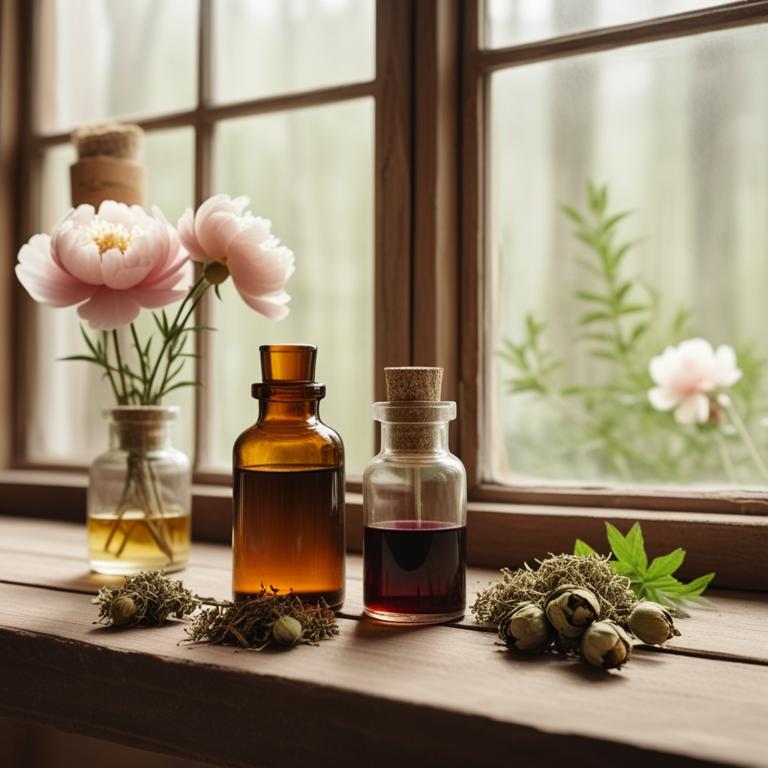
Paeonia lactiflora tinctures contains bioactive constituents like paeonol, paeoniflorin, and ferulic acid.
These compounds have anti-inflammatory properties that help reduce prostaglandins, hormone-like substances that cause pain and cramping during menstruation. Paeoniflorin also has a sedative effect, which can help calm the body and reduce discomfort. Ferulic acid has antioxidant properties that can help reduce inflammation and pain.
By reducing prostaglandins, inflammation, and pain, paeonia lactiflora tinctures can provide relief from period cramps.
- Gather 1 cup of dried Paeonia lactiflora roots and 2 cups of vodka in a clean glass jar.
- Add the dried roots to the jar and fill with vodka, making sure the roots are completely covered.
- Close the jar and store it in a cool, dark place for 2 weeks, shaking the jar daily.
- After 2 weeks, strain the mixture through a cheesecloth or a coffee filter into another clean glass jar, discarding the solids.
- Label the jar with the date and the contents, and store the tincture in a cool, dark place. Use 20-30 drops of the tincture in water or tea as needed to relieve period cramps.
5. Angelica archangelica
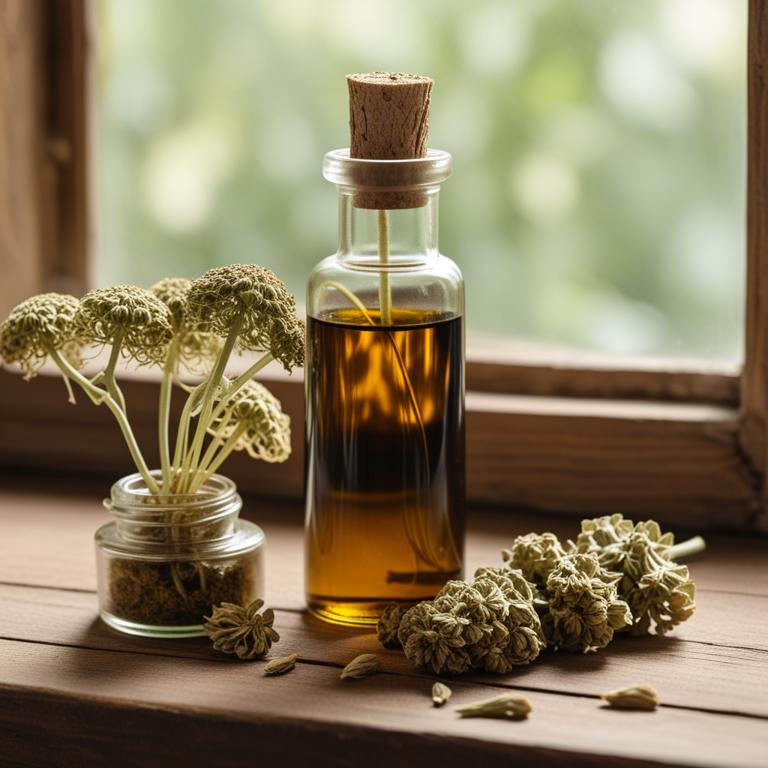
Angelica archangelica tinctures contains angelic acid, sesquiterpenes, and flavonoids as its bioactive constituents.
These compounds have anti-inflammatory and antispasmodic properties, which help to reduce period cramps by relaxing the uterine muscles. The sesquiterpenes in Angelica archangelica tinctures have a pain-relieving effect, similar to that of ibuprofen, by blocking the production of prostaglandins, which cause pain and inflammation. The flavonoids in the tincture also have antioxidant properties, which help to reduce oxidative stress and inflammation in the body, further alleviating period cramps.
By reducing inflammation and relaxing the uterine muscles, Angelica archangelica tinctures can provide relief from period cramps.
- Gather 1 cup of dried Angelica archangelica root, 2 cups of 80% vodka, and a glass jar.
- Combine the dried Angelica archangelica root and vodka in the glass jar. Stir well.
- Seal the jar and let it sit in a cool, dark place for 2 weeks, shaking the jar daily.
- Strain the mixture through a cheesecloth into another glass jar, discarding the solids.
- Store the tincture in a cool, dark place and take 20-30 drops, 2-3 times a day, as needed for period cramp relief.
6. Valeriana officinalis
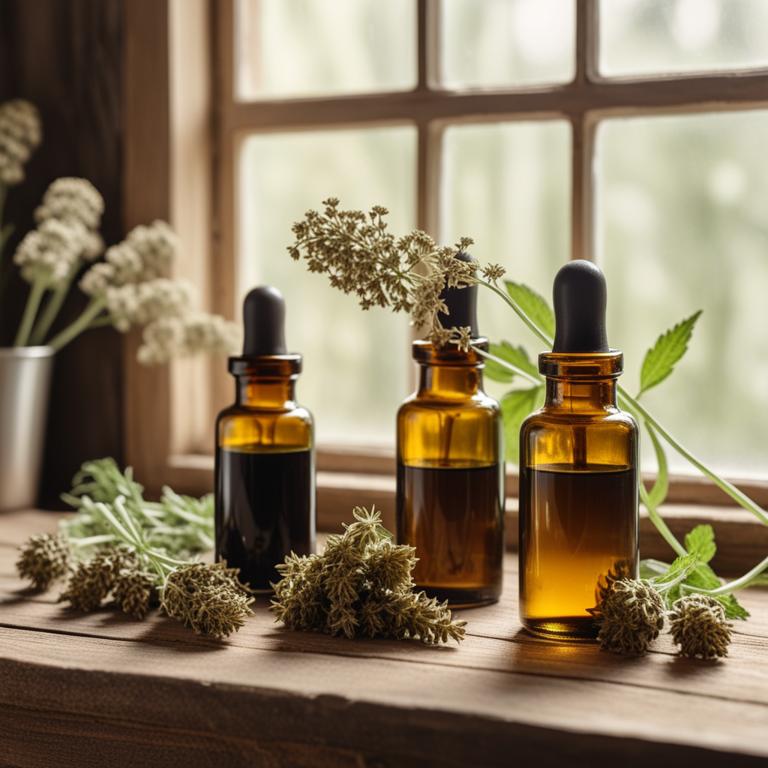
Valeriana officinalis tinctures contains valerenic acid and isovaleric acid, two key bioactive constituents that help ease period cramps.
Valerenic acid has a sedative effect on the nervous system, reducing muscle spasms and inflammation that contribute to cramping. Isovaleric acid has a calming effect on the body, helping to relax the uterine muscles and reduce pain. The antispasmodic and anti-inflammatory properties of Valeriana officinalis tinctures help to alleviate crampy pain and discomfort associated with menstrual periods.
By reducing muscle tension and inflammation, Valeriana officinalis tinctures provides relief from period cramps and promotes a sense of calm and relaxation.
- Gather 1 cup of Valeriana officinalis roots and 2 cups of vodka in a clean glass jar.
- Add the Valeriana officinalis roots to the jar and pour vodka over them. Make sure the roots are completely covered.
- Seal the jar and store it in a cool, dark place for 2-3 weeks, shaking the jar daily.
- After 2-3 weeks, strain the mixture through a cheesecloth or a coffee filter into another clean glass jar. Discard the solids.
- Store the Valeriana officinalis tincture in a dark glass bottle with a dropper lid. Take 10-20 drops, 2-3 times a day, as needed to relieve period cramps.
7. Glycyrrhiza glabra

Glycyrrhiza glabra tinctures contains glycyrrhizin and other bioactive constituents like flavonoids and triterpenoids.
These compounds have anti-inflammatory properties, which help reduce swelling and ease pain in the uterus. Glycyrrhizin also has a natural ability to relax the uterine muscles, reducing cramps and spasms associated with menstrual periods. The tannins in Glycyrrhiza glabra tinctures help to constrict blood vessels, reducing blood flow to the uterus and thereby alleviating cramp symptoms.
By combining these properties, Glycyrrhiza glabra tinctures can provide relief from period cramps.
- Gather 1 cup of dried Glycyrrhiza glabra root. You can buy this from a health food store.
- Combine 1 cup of dried Glycyrrhiza glabra root with 2 cups of vodka in a clean glass jar. Vodka acts as a solvent.
- Seal the jar and store it in a cool, dark place for 2-3 weeks. Shake the jar every day to help the roots release their properties.
- After 2-3 weeks, strain the liquid through a cheesecloth or a coffee filter into another clean glass jar. Discard the roots.
- Store the tincture in a cool, dark place. Use 5-10 drops of the tincture in water or tea to help with period cramps, up to 3 times a day.
8. Lavandula angustifolia

Lavandula angustifolia tinctures contains linalool and linalyl acetate, two active constituents that have a soothing effect on the body.
These compounds help to relax the uterine muscles, reducing cramping and discomfort during menstruation. Linalool also has anti-inflammatory properties, which can help to reduce swelling and pain associated with period cramps. The sedative properties of linalyl acetate can help to calm the nervous system, reducing anxiety and stress that can exacerbate period cramps.
By relaxing the uterine muscles and reducing inflammation, Lavandula angustifolia tinctures can help to alleviate period cramps and promote a sense of comfort and relief.
- Gather 1 cup of dried Lavandula angustifolia flowers and 2 cups of vodka in a clean glass jar.
- Combine the dried flowers and vodka in the jar, making sure the flowers are completely covered.
- Seal the jar and let it sit in a cool, dark place for 2-3 weeks, shaking the jar every day.
- After the sitting time, strain the mixture through a cheesecloth or a coffee filter into another clean glass jar, discarding the solids.
- Label the jar with the date and the contents, and store it in a cool, dark place. Take 5-10 drops of the tincture in water as needed for period cramps.
9. Ginkgo biloba

Ginkgo biloba tinctures contains flavonoids, bilobalide, and ginkgolides as its bioactive constituents.
These compounds have anti-inflammatory and vasodilatory properties, which help to relax blood vessels and reduce pain. The flavonoids in Ginkgo biloba tincture have antioxidant properties, which can help to reduce prostaglandins, hormone-like substances that cause cramping. The bilobalide and ginkgolides in Ginkgo biloba tincture may also help to reduce muscle spasms and improve blood flow to the uterus, reducing cramp severity.
By relaxing blood vessels and reducing prostaglandins, Ginkgo biloba tinctures can help to alleviate period cramp pain.
- Gather 1 cup of fresh or dried Ginkgo biloba leaves. Use a digital scale to measure 1 cup of leaves weighing 250 grams.
- Place the Ginkgo biloba leaves in a clean glass jar. Make sure the jar is large enough to hold all the leaves with about 1 inch of space on top.
- Pour 2 cups of 80% vodka over the Ginkgo biloba leaves. Make sure the leaves are completely covered with vodka.
- Seal the jar tightly and store it in a cool, dark place for 2-3 weeks. Shake the jar every day to help the vodka extract the active compounds from the leaves.
- Strain the liquid through a cheesecloth or a coffee filter into another clean glass bottle. Discard the solids and store the tincture in the fridge for up to 6 months.
10. Curcuma longa

Curcuma longa tinctures contains compounds like curcumin, demethoxycurcumin, and bisdemethoxycurcumin, which are responsible for its medicinal properties.
Curcumin, in particular, has potent anti-inflammatory and antioxidant effects, which help to reduce pain and swelling associated with period cramps. The anti-inflammatory properties of curcumin work by inhibiting the production of prostaglandins, hormone-like substances that cause the uterus to contract and lead to cramps. Additionally, curcuma longa tinctures has a relaxing effect on the uterus, helping to ease cramping and discomfort.
Its anti-inflammatory and antioxidant properties also help to reduce inflammation and oxidative stress, which are often associated with period cramps.
- Gather ingredients: 1 cup of dried Curcuma longa roots, 2 cups of 80-proof vodka, and a clean glass jar.
- Combine the dried Curcuma longa roots and vodka in the glass jar. Stir well.
- Seal the jar and let it sit in a cool, dark place for 2-3 weeks, shaking the jar every day.
- Strain the liquid through a cheesecloth or a coffee filter into another clean glass jar. Discard the solids.
- Store the tincture in a cool, dark place. Take 20-30 drops, 2-3 times a day, as needed to relieve period cramps.
11. Avena sativa

Avena sativa tinctures contains a concentration of active constituents, including avenacoside A and avenalumic acid.
These compounds have been shown to have a relaxing effect on the muscles, which can help to ease cramping during menstrual periods. Avena sativa tinctures also contain lignans, which have anti-inflammatory properties that can help to reduce swelling and discomfort. Additionally, the tannins in Avena sativa tinctures can help to constrict blood vessels, which can reduce the flow of blood to the uterus and alleviate cramping.
By using Avena sativa tinctures, women can experience relief from period cramps without the need for pharmaceutical medications.
- Gather 1 cup of Avena sativa dried root and 2 cups of 80% vodka in a clean glass jar.
- Fill a cheesecloth or a coffee filter with the Avena sativa dried root and place it in the jar.
- Pour the vodka over the Avena sativa root, making sure the root is completely covered.
- Seal the jar and let it sit in a cool, dark place for 2-6 weeks, shaking the jar every day.
- Strain the liquid through the cheesecloth or coffee filter and discard the solids. Store the tincture in a cool, dark place.
FAQ
Can drinking herbal tea prevent period cramps from forming?
Drinking herbal tea may help ease period cramps.
Some teas, like ginger and chamomile, contain natural ingredients that can relax the muscles and reduce pain.
These teas work by releasing chemicals that help block pain signals to the brain, making them feel less intense.
Is it safe to consume herbal teas for period cramps every day?
While herbal teas can be a helpful relief for period cramps, it's not recommended to drink them every day.
Some herbal teas can interact with medications or have side effects if consumed too frequently.
It's best to limit your intake to when you need it most, like during your period, and consider rotating with other remedies.
How long does it take for herbal teas to show results in period cramps?
Herbal teas like ginger and chamomile may help ease period cramps.
Some people notice relief within a few hours, while others may take a day or two to feel better.
The teas work by relaxing the muscles and reducing inflammation in the uterus, which can help ease cramp pain.
Related Articles
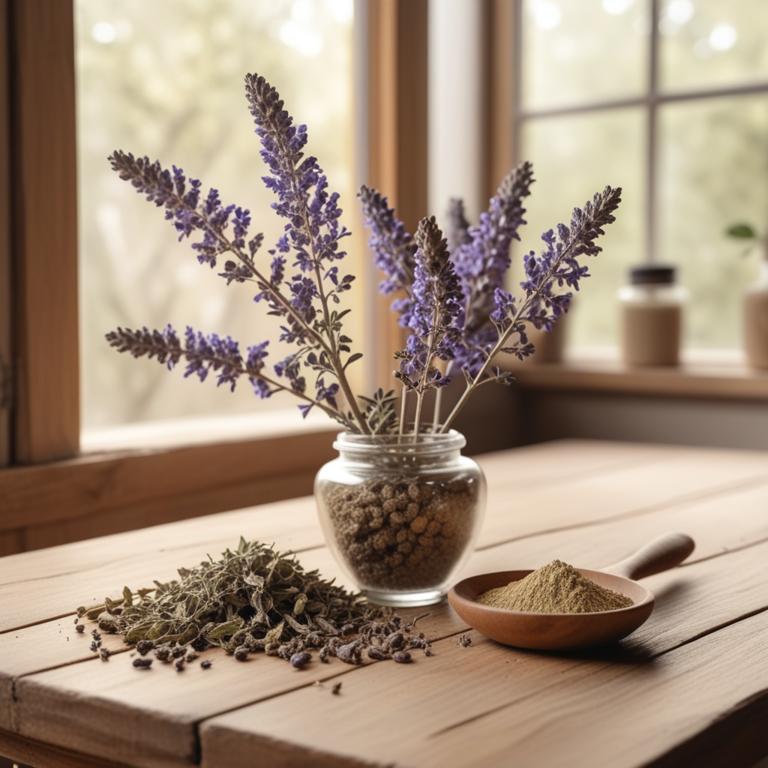
Overcoming Premenstrual Syndrome: Causes and Effective Herbal Remedies
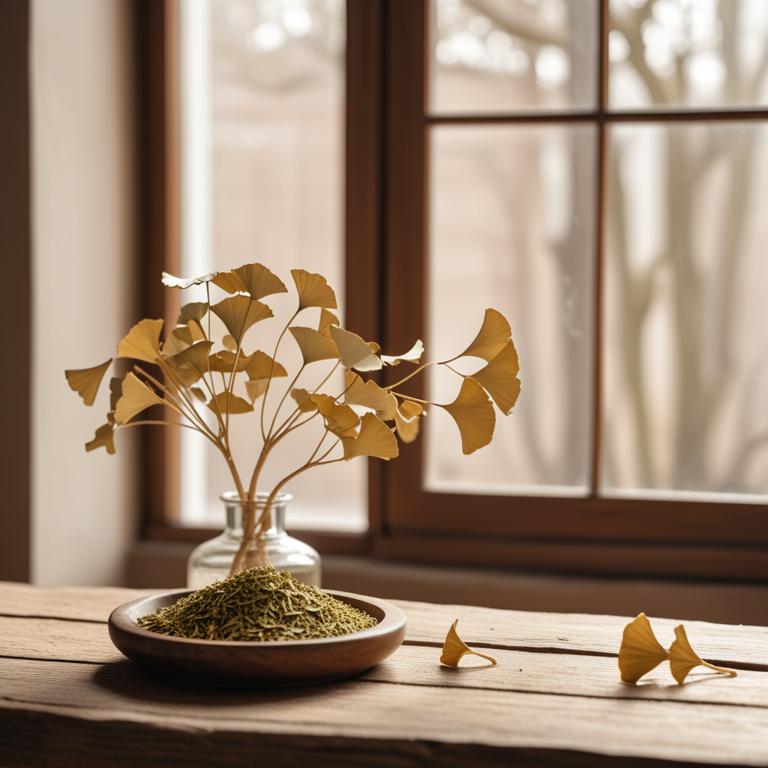
Amenorrhea Causes, Symptoms, and Treatment with Medicinal Herbs
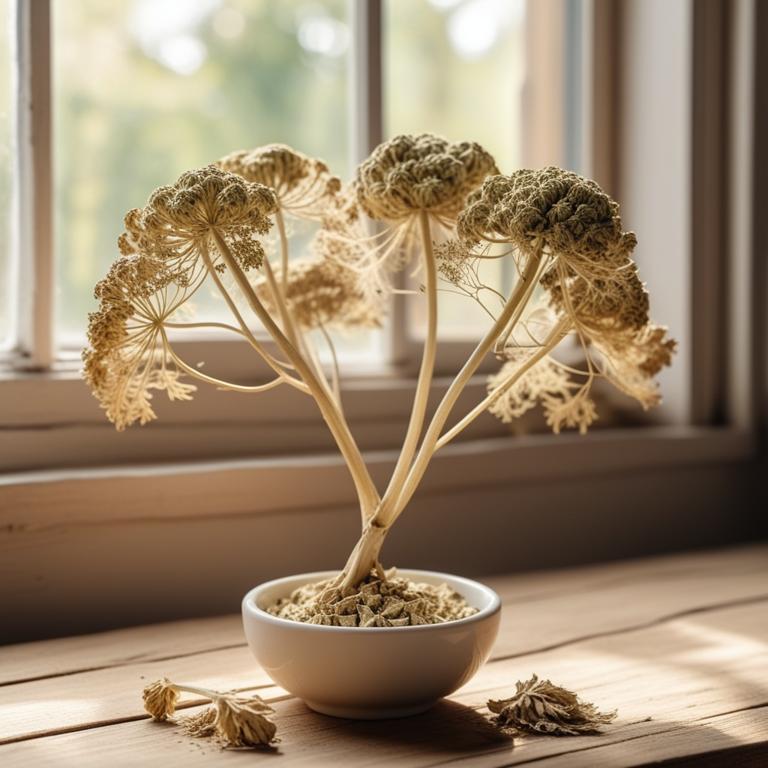
The Science and Herbal Remedies Behind Period Cramps
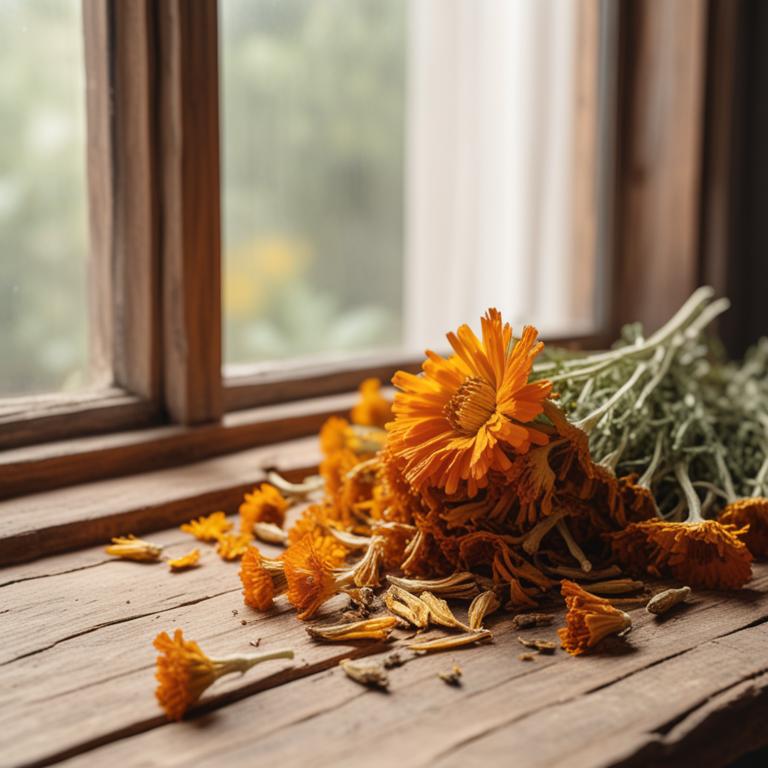
Vaginitis: Understanding the Causes and Herbal Remedies
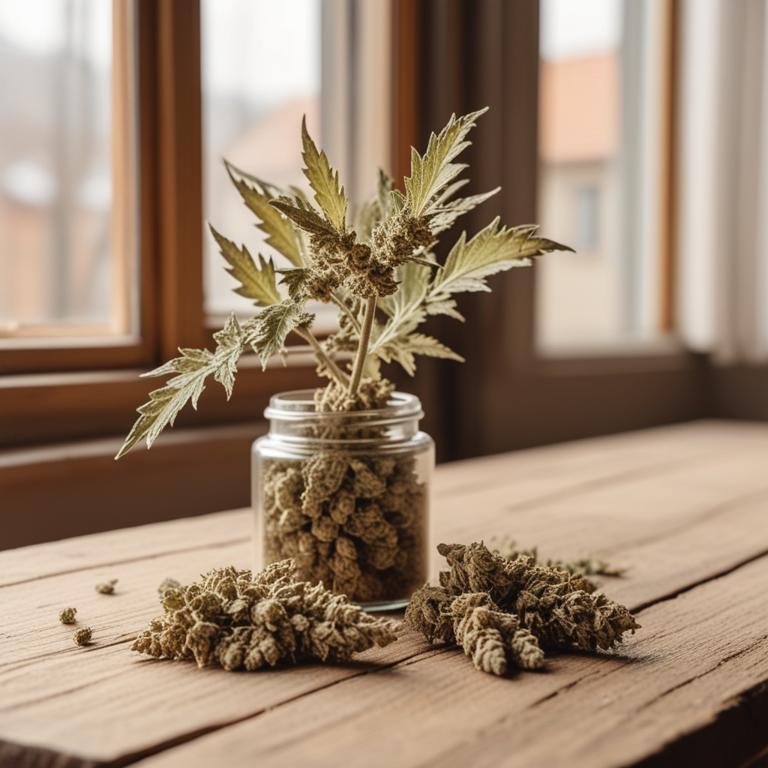
Understanding Uterine Fibroids: Causes, Medicinal Herbs, and Alternative Treatments
